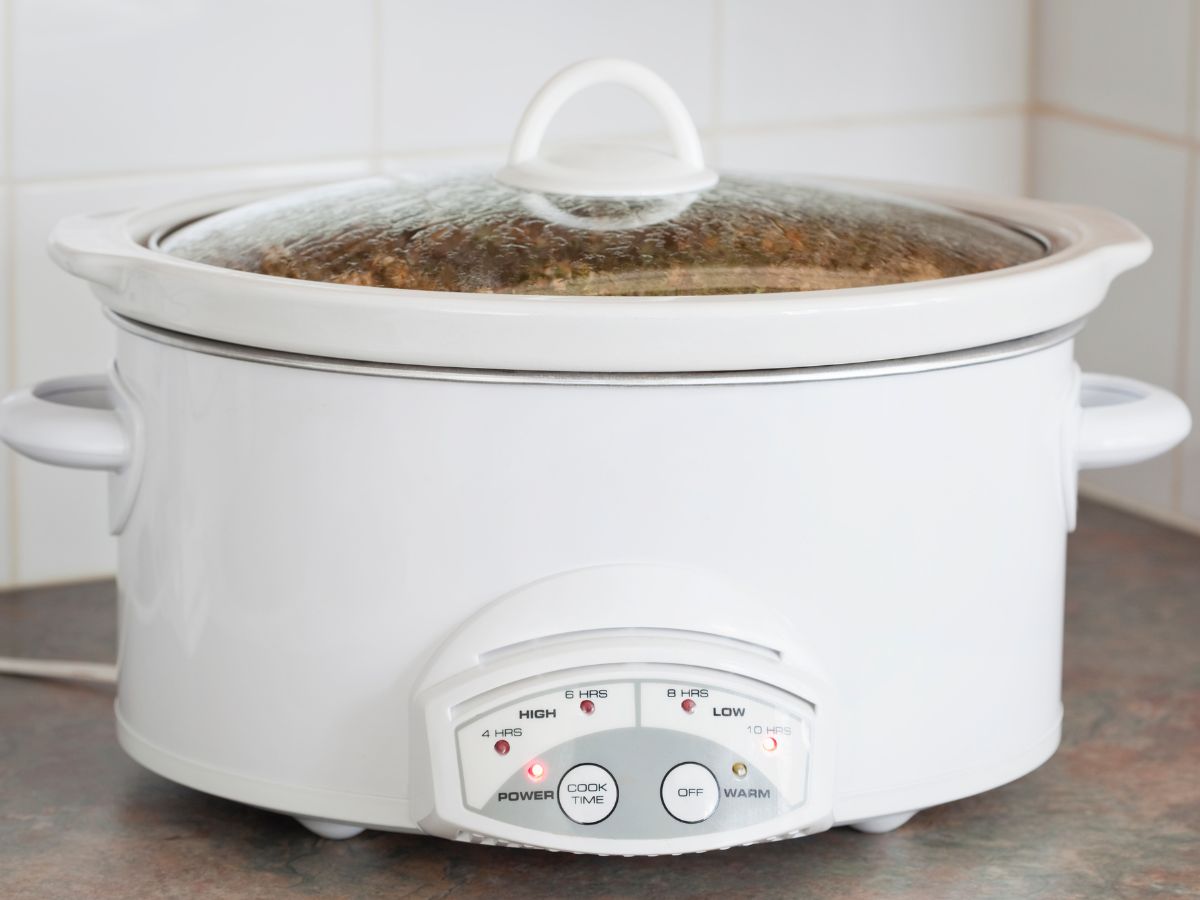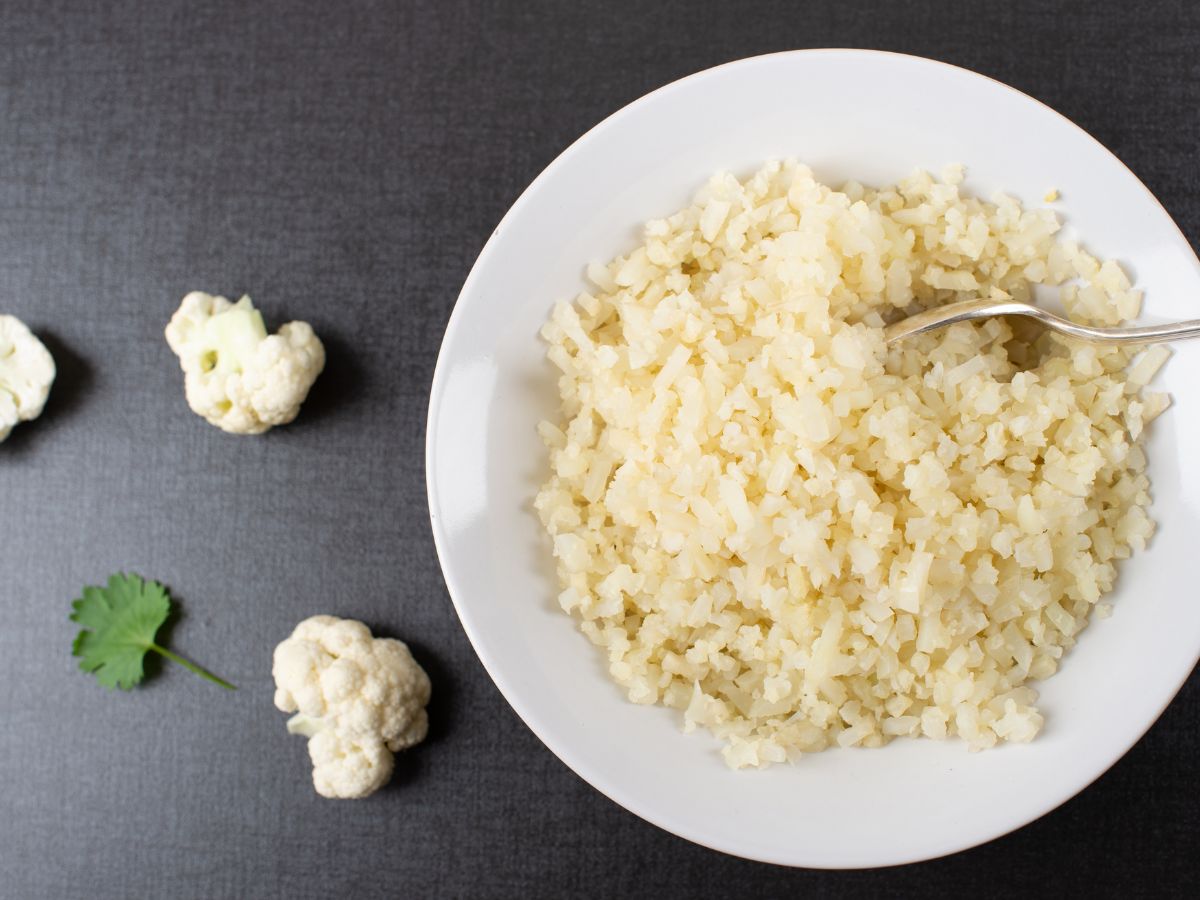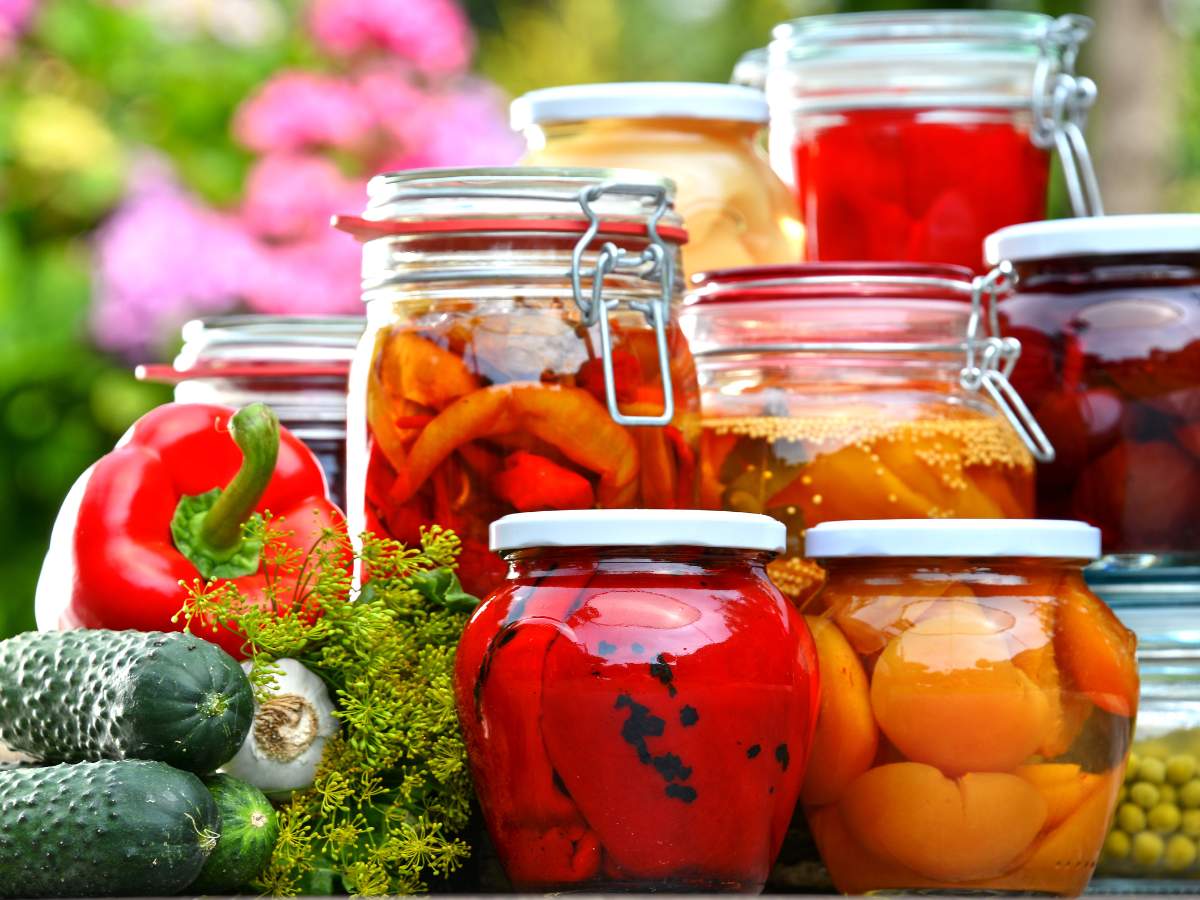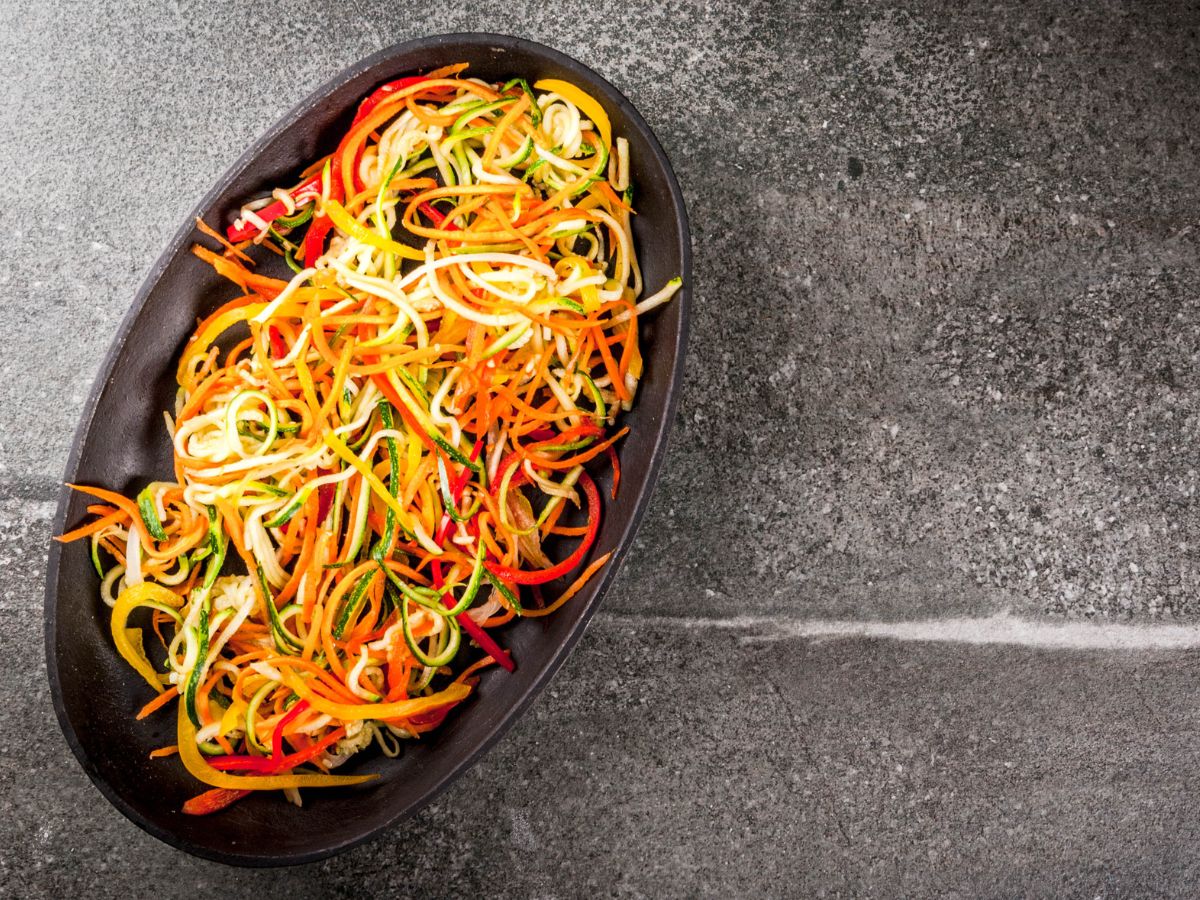Savor Every Sip: How To Make French Press Coffee At Home
As a participant in the Amazon Services LLC Associates Program and other affiliate programs, Easy Homemade Life may collect a share of sales or other compensation from the links on this page. This comes at no additional cost to you, and all the prices and availability are accurate at the time of publishing.
Indulge in the luxurious taste of French press coffee, a timeless method that invites you to craft a cup precisely tuned to your tastes. You can enjoy a rich, full-bodied flavor and master the art of making this delicious coffee at home.
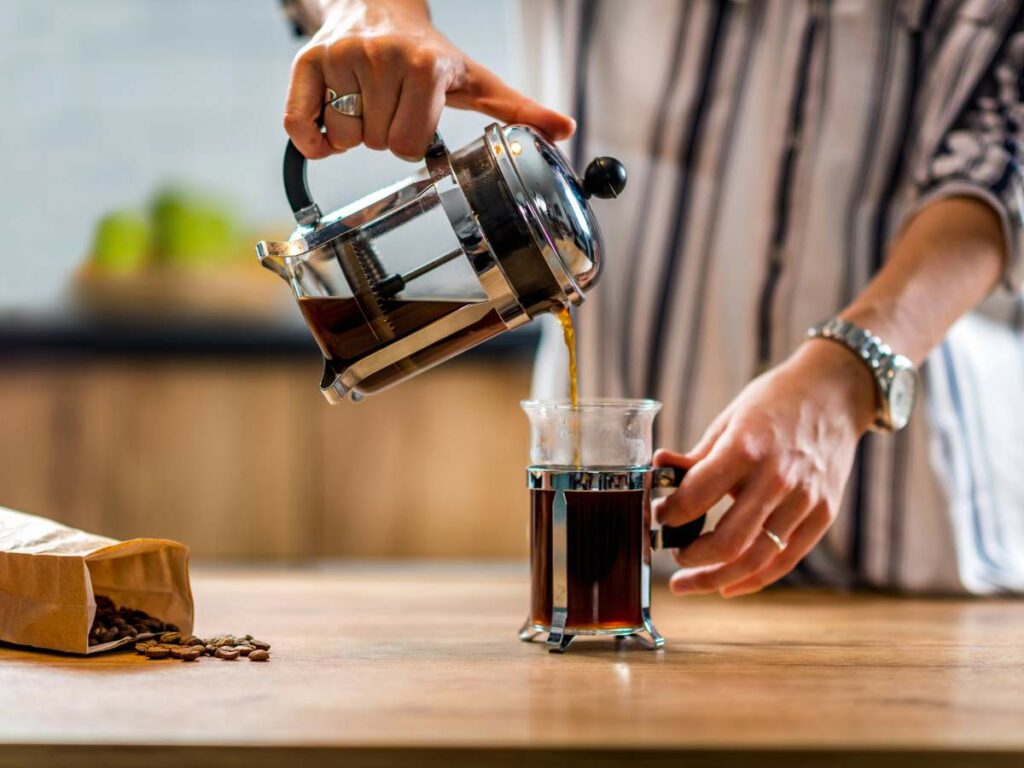
This article will help unravel the secrets of French press coffee. Discover the advantages and learn how to make a perfect cup of coffee every time.
What Is French Press Coffee?
French press coffee is a method of brewing coffee that involves steeping coarsely ground coffee beans in hot water, then using a plunger with a mesh filter to separate the grounds from the liquid. It’s known for producing a rich, full-bodied flavor, and it’s one of the easiest ways to make quality coffee at home.
A French press has a simple yet effective design. It comprises a cylindrical glass or stainless steel container and a plunger with a fine wire mesh filter.
The beauty of this method is that it gives you complete control over the brewing process, from the grind’s coarseness to steeping time. This is why a French press makes one of the best gifts for coffee lovers!
There are different types of coffee you can use, but I found that coffees Central and South America and Indonesia pair best with the French press because of their nutty and chocolatey profiles. Even Starbucks sells these delicious coffee beans! These include:
- Brazilian Coffee: With its smooth and mellow flavor profile, often featuring rich notes of chocolate, nuts, and caramel, Brazilian coffee is a must for a French press. It has a medium to full-bodied texture and offers a creamy and velvety mouthfeel, making it an excellent choice for other brewing methods like espresso and pour-over.
- Colombian Coffee: Known for its balanced flavor profile, Colombian coffee has nutty undertones, a slight cocoa finish with hints of fruit. Aside from French press, it’s great for other brewing methods such as espresso, drip coffee, and pour-over.
- Guatemalan Coffee: This delicious coffee is known for its medium body, subtle acidity, and notes of chocolate and nuts with bright fruit undertones. Try Guatemalan coffee if you appreciate a well-rounded and flavorful cup.
- Costa Rican Coffee: I love this coffee because of its smooth and slightly creamy texture. It’s bright and clean and has a well-balanced sweetness that features floral notes and hints of citrus and honey – it’s just perfect for a French press!
- Sumatran Coffee: If you’re into a bold and intense cup of coffee, you might want to try Sumatran coffee with your French press. It has a complex flavor profile, often featuring notes of dark chocolate, tobacco, and spice, with a rich, syrupy texture. It pairs well with milk or ice, too.
- Java Coffee: Java coffee, a product from Indonesia, has a rich, smooth flavor profile that features notes of dark chocolate, nuts, and earthy undertones, with a hint of sweetness. It offers a robust mouthfeel because of its dense and velvety texture that makes it ideal for a French press.
“I started using a French press because I am the only person in my house who drinks coffee, and I wanted something smaller than a drip coffee maker that could still make a few cups at a time. I love that there is no waste — no filters or K-cups to toss or recycle — but most important, I love the coffee it makes! It’s so smooth and flavorful, and I can make it really strong, just the way I like it.”
— Robin Donovan, All Ways Delicious
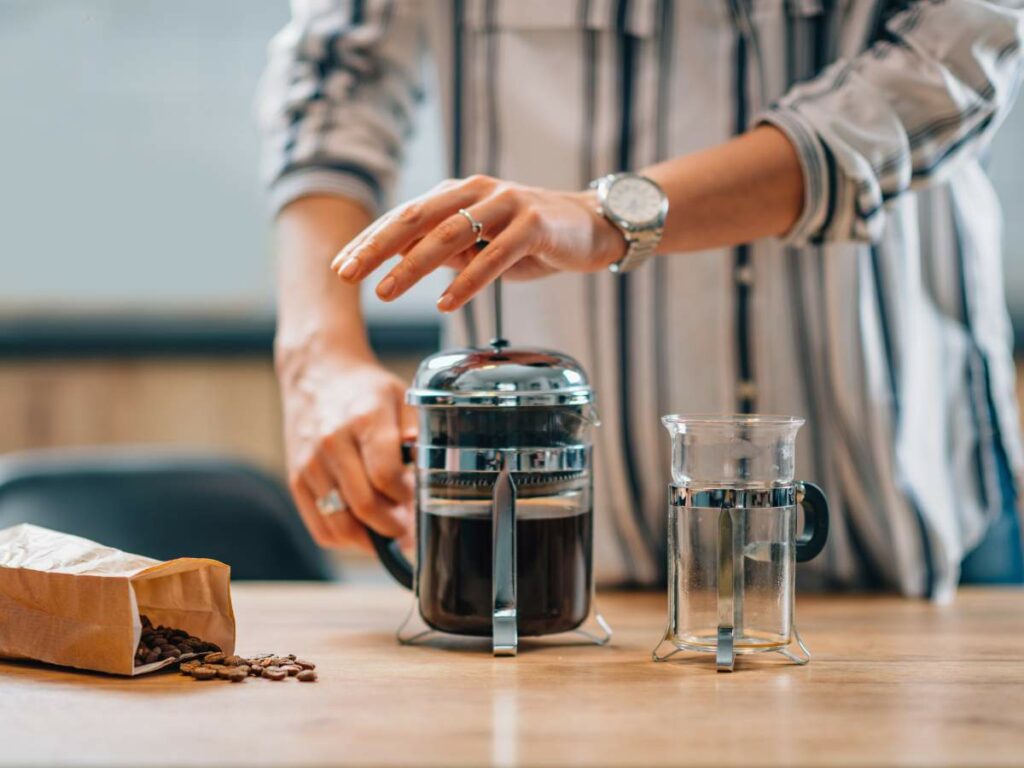
Equipment Needed
Making French press coffee is a relatively simple process that uses a few specific tools. It’s best to gather all the needed materials in one place first to streamline your coffee-making process.
- French Press: This is the most critical tool, as it’s specially designed to steep coffee grounds in hot water and then separate the grounds from the coffee using a mesh filter plunger. French presses come in various sizes; you can choose one based on how much coffee you want.
- Coffee Grinder: Freshly ground coffee beans are essential for a flavorful French press coffee. A burr grinder is usually recommended because it grinds the coffee beans to a consistent size.
- Other Equipment: You will need standard kitchen tools, including a kettle to boil water and a wooden or plastic spoon to stir the coffee grounds. A kitchen scale is also helpful but not essential.
Step-By-Step Process For French Press Coffee
Making French press coffee is quite easy. Follow these steps to start:
- Measure The Coffee Beans: You need a 1:15 ratio of coffee to water. For example, for every 1 gram of coffee, you should use 15 grams of water. If you don’t have a kitchen scale, use 15 ounces of water for every 2 tablespoons of ground coffee.
- Grind The Beans: Grind your coffee beans to a coarse consistency, similar to sea salt. A coarse grind will prevent any bitterness.
- Combine Coffee And Water: Put the ground coffee into the press. Heat water to just under boiling temperature and then gently pour it over the coffee grounds. Let the grounds soak in the water for about 30 seconds.
- Stir And Steep: Using a long spoon, gently stir the coffee grounds and water mixture. Place the plunger on top to keep the heat in, but do not press it down yet. Allow the coffee to steep for about 4 minutes.
- Press Down Slowly: Press the coffee plunger down slowly and evenly once the steeping time is up. This step separates the coffee grounds from the liquid.
- Pour And Enjoy: Immediately pour the coffee into your cup. Enjoy your perfectly brewed coffee along with your favorite breakfast foods.
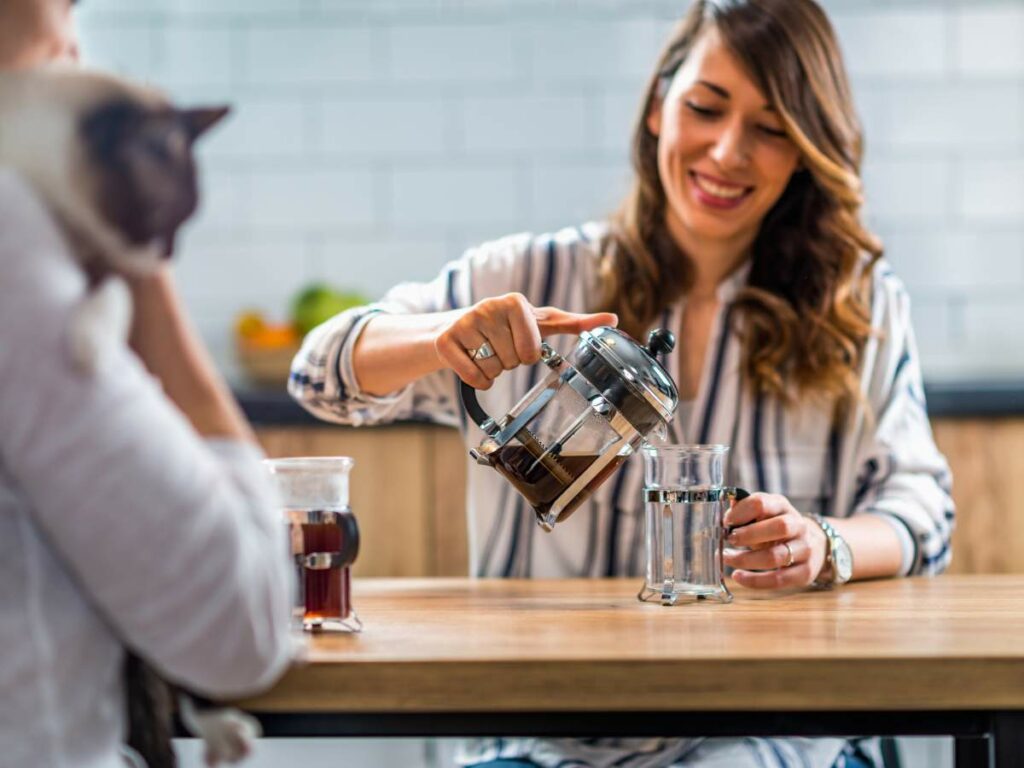
What Makes French Press Coffee Unique
A few key characteristics make French press coffee unique when compared to other brewing methods.
- Control Over The Brewing Process: With a French press, you have more control over the brewing process. You determine the water temperature, brewing time, and coffee-to-water ratio.
- Richer, Stronger Flavor: The steeping process extracts more oils and flavors from the coffee grounds, providing a bolder taste than other coffee-making methods.
- No Filter Needed: French press coffee does not use a paper filter, which allows more natural oils to pass through, contributing to a fuller-bodied coffee.
- More Sediment: The lack of a paper filter means French press coffee may have more sediment at the bottom of the cup. Other methods, such as drip and pour-over, create a more uniform liquid texture with less sediment due to the paper filter.
Common Mistakes To Avoid
While the process of making French press coffee is simple, there are a few key areas where mistakes can creep in.
- Grind Size: Use a coarse grind for the best results. A fine grind can lead to over-extraction and bitterness.
- Water Temperature: Aim for a temperature between 195 F to 205 F. Using boiling water can scorch the coffee, creating a burnt taste. You can get the optimal temperature by bringing the water to a boil, then taking it off the heat and letting it rest for 1 minute.
- Steeping Time: Steep the coffee for 4 to 5 minutes. Over-steeped coffee can taste bitter while under-steeping creates a weak coffee.
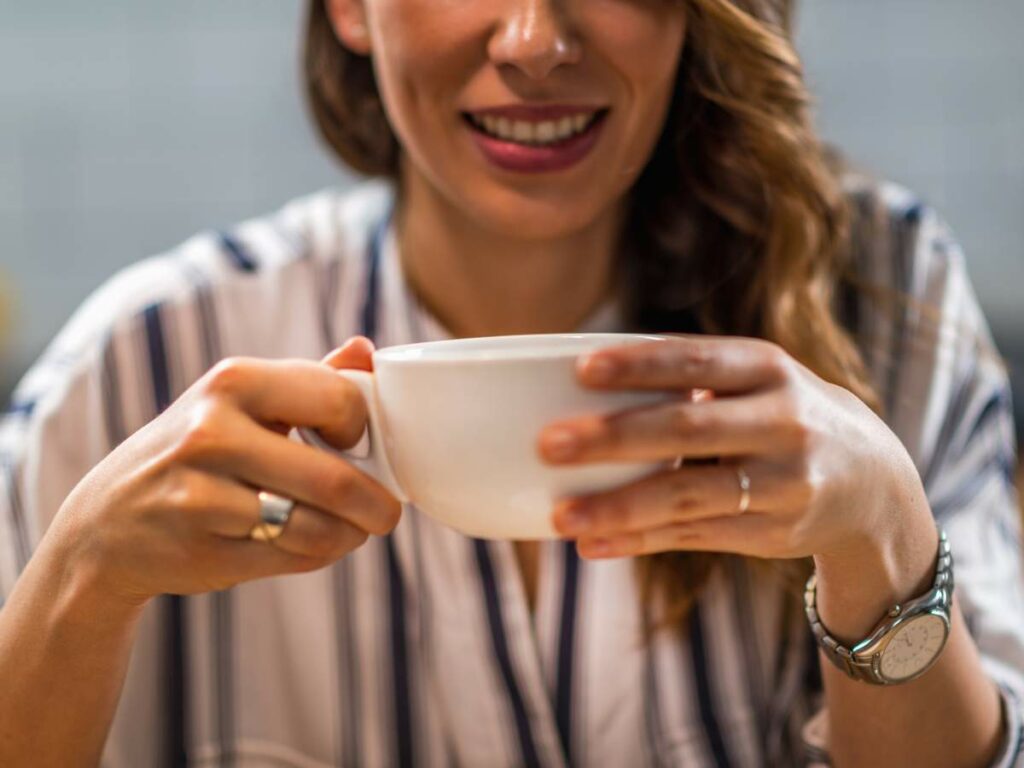
Convenient And Affordable
Owning a French press is both convenient and cost-effective. These simple devices are easy to use, require minimal equipment and don’t require electricity. You can even use a French press to make cold brew coffee.
A French press is also compact and easy to transport, making it an excellent option for those on the go. You can bring it to work, take it with you on a trip or enjoy it at home.
“When I travel, I always bring a small French press. It guarantees I will have the smoothest, richest, most luxurious cup of coffee in the mornings.”
— Susannah Brinkley Henry, Feast + West
Use your freshly brewed coffee to make all your favorite coffee drinks at home, from a pumpkin spice latte or a chocolate chai latte to a cafe au lait. This lets you enjoy a delicious, cafe-quality brew right in your own home.
Environmental Benefits Of Using A French Press
In addition, the French press has some clear environmental advantages. Since it doesn’t require paper filters or single-use plastic pods, you’ll help reduce waste. By choosing a French press, you’re contributing to a more sustainable way of enjoying your daily coffee.
Conclusion
A French press allows you to enjoy richer, more flavorful coffee with simplicity and convenience. Its affordability also makes it an excellent option for quality coffee without spending a fortune at expensive coffee shops. Experience the difference of French press coffee for yourself.
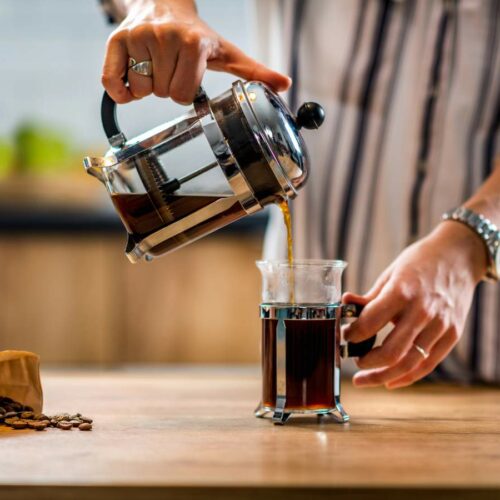
How To Make French Press Coffee At Home Step By Step
Equipment
- 1 Coffee grinder
Ingredients
- 2 cups water
- 2 tablespoons ground coffee
Instructions
- Measure your coffee beans. I recommend following the 1:15 ratio of coffee to water (1 gram of coffee to 15 grams of water). You can use a scale, but if you don’t have one, use 15 ounces of water for every 2 tablespoons of ground coffee.
- Use a coffee grinder to grind the beans to a coarse, sea salt consistency. A medium or coarse grind will help prevent any bitterness.
- Put the ground coffee into the press. Heat water in your kettle to just under boiling temperature then pour it gently over the coffee grounds. Let sit for 30 seconds to allow the coffee to bloom.
- Use a long spoon to gently stir the coffee and water mixture, focusing on the crust at the top. Attach the plunger to help keep the heat in then let steep for 3 to 4 minutes.
- Press the plunger down slowly and evenly to separate the coffee grounds from the liquid.
- Pour the coffee into your cup immediately and enjoy!
Notes
Nutrition
Portions of this article originally appeared on Food Drink Life



